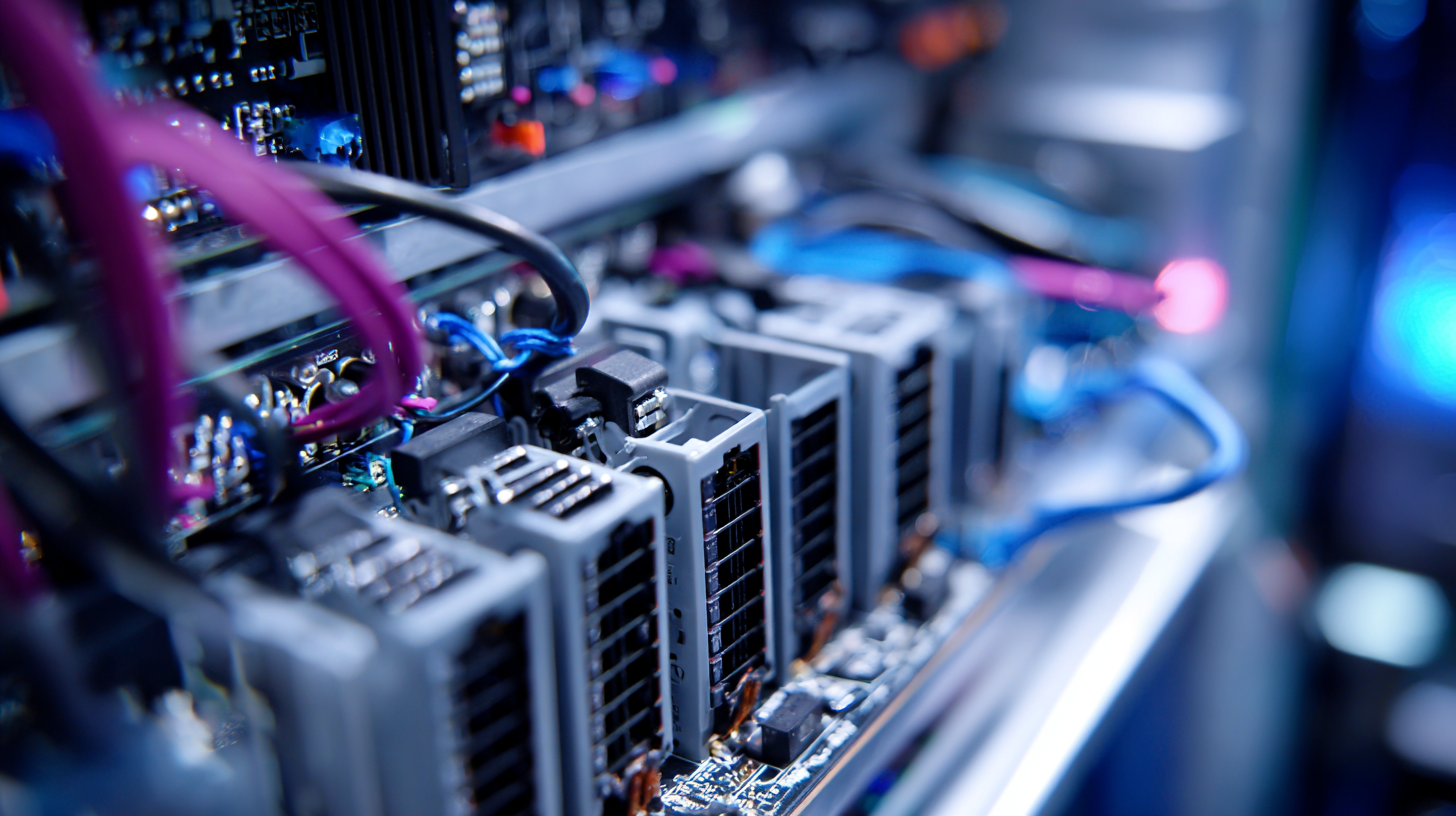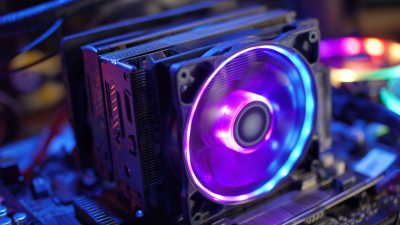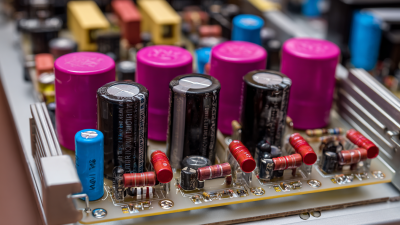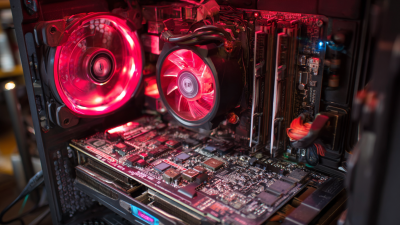Unlocking Efficiency: How Switching Power Supplies Transform Modern Electronics
The rapid evolution of modern electronics has underscored the critical role of switching power supplies in enhancing efficiency across various applications. According to a recent report by Market Research Future, the global switching power supply market is projected to reach $20 billion by 2025, growing at a CAGR of 7% from 2019 to 2025. This growth is driven by the increasing demand for compact, energy-efficient solutions in consumer electronics, IT infrastructure, and industrial systems. Switching power supplies, with their ability to convert electricity more efficiently compared to linear power supplies, are essential for minimizing energy loss and expanding the operational lifespan of devices. The shift towards renewable energy sources and stringent regulatory standards regarding energy consumption further emphasize the need for advanced power management solutions in modern electronics, making switching power supplies a cornerstone in the pursuit of sustainability and performance optimization.

The Evolution of Power Supply Technology: From Linear to Switching
The evolution of power supply technology marks a significant pivot from linear to switching solutions, reshaping modern electronics. Linear power supplies, once the standard, have limitations due to their bulkiness and lower efficiency, particularly in applications requiring voltage regulation. With the advent of switching power supplies (SMPS), there has been a remarkable transformation. SMPS utilize high-frequency switching techniques, resulting in a compact design and enhanced energy efficiency. The global bench power supply market reflects this shift, projected to grow significantly by 2032, driven by advancements in SMPS technology.
Tips for transitioning to switching power supplies include understanding load requirements, as they operate optimally across a range of voltages and currents. Additionally, consider thermal management; with higher efficiency comes lower heat generation, but ensuring adequate cooling can prolong the lifespan of the units. It's also crucial to invest in high-quality components to achieve best performance, ensuring reliability in critical applications. As demonstrated by the projected outreach of the SMPS market, embracing this technology is essential for future-forward design in electronics.

Key Benefits of Switching Power Supplies: Efficiency, Size, and Cost Savings
Switching power supplies have revolutionized modern electronics by offering significant advantages over traditional linear power supplies. One of the primary benefits is efficiency; switching power supplies can achieve efficiency levels of up to 90% or more. This high efficiency translates into less energy waste and reduced heat generation, making them ideal for applications where power conservation is crucial. As devices become more power-hungry, maintaining efficiency ensures that less energy is wasted, contributing to a greener environment and lower electricity costs.
In addition to improved efficiency, switching power supplies tend to be more compact than their linear counterparts. The smaller footprint allows for more flexible designs in various electronic devices, enabling manufacturers to create sleeker products without compromising on performance or reliability. Furthermore, as they typically require fewer external components, switching power supplies contribute to cost savings in both production and material costs. These combined advantages make switching power supplies a pivotal component in the design and functionality of modern electronic devices, driving innovation across industries.
Industry Statistics: The Shift to Power Dense Solutions in Consumer Electronics
The shift toward power-dense solutions in consumer electronics is prominently reflected in the rapid growth of various sectors, particularly in the context of advanced technologies like switching power supplies. The market for switching mode power supplies is projected to optimize energy efficiency significantly within both industrial and consumer electronics, targeting improved performance and reduced energy costs. As devices demand more power without compromising on size, manufacturers are increasingly adopting these innovative solutions to meet consumer expectations.
Parallel to this trend, the global NOR Flash market is witnessing a remarkable expansion, with an estimated market size of USD 10.73 billion. This surge signals a growing reliance on non-volatile memory solutions, which are critical for efficient data storage and retrieval in modern electronics. Similarly, the metal air-battery segment is gearing up for substantial growth, projected to reach approximately USD 2,600.31 million by 2034, underscoring the increasing demand for alternative energy storage systems. Together, these advancements are propelling the industry toward greater efficiency and sustainability, showcasing the transformative impact of technology in the consumer electronics landscape.
Environmental Impact: How Switching Power Supplies Reduce Energy Consumption
Switching power supplies are rapidly transforming the landscape of modern electronics, driven by their efficiency and reduced environmental impact. According to recent market forecasts, the global bench power supply market is expected to grow from $661.68 million in 2024 to $1,076.28 million by 2032, reflecting a compound annual growth rate (CAGR) of 6.30%. This growth underscores the increasing reliance on technologies that enhance energy efficiency while minimizing waste.
The environmental benefits of switching power supplies are particularly noteworthy. They significantly lower energy consumption compared to traditional models, which not only reduces operational costs but also addresses urgent climate change issues. A recent study by a major tech firm assessed the environmental impacts of data center cooling methods, revealing that optimizing energy use can lead to substantial reductions in carbon emissions over the life cycle of these facilities.
Tips:
- When selecting power supplies for your electronics, prioritize models that feature high efficiency ratings to minimize energy loss.
- Consider implementing smart management systems that dynamically adjust power usage based on demand, further enhancing energy savings.
- Stay informed about advances in power supply technology, such as gallium nitride (GaN) and silicon carbide (SiC), which promise even greater efficiency and performance.
Future Trends: Smart Power Supplies and Their Role in IoT Devices
Smart power supplies are pivotal in the evolution of Internet of Things (IoT) devices, offering a range of benefits that enhance both functionality and energy efficiency. These advanced power management systems are designed to optimize energy consumption, enabling IoT devices to operate longer and more reliably. By integrating features such as adaptive control and real-time monitoring, smart power supplies can adjust their output based on the needs of connected devices, ensuring minimal energy wastage while maximizing performance.
As IoT applications continue to proliferate across various sectors, from home automation to industrial monitoring, the role of smart power supplies becomes increasingly vital. They not only power these devices but also contribute to an overall ecosystem that prioritizes sustainability. Moreover, future trends indicate a shift towards more intelligent power solutions that incorporate machine learning and predictive analytics, allowing for even greater efficiency and responsiveness in a connected world. This evolution positions smart power supplies at the forefront of technological innovation, shaping the future of how electronic devices communicate and function within the IoT landscape.

Related Posts
-

Addressing Common Issues with DC Supply Systems: A Comprehensive Guide
-

How to Choose the Right PC Power Supply for Your Gaming Setup
-

Understanding DC Power Supply: Key Components and Their Impact on Modern Electronics
-

Understanding the Differences in Power Supply Unit Technologies
-

How to Choose the Right ATX Power Supply for Your PC Build
-

Understanding DC to AC Converters: Efficiency Ratings and Real-World Applications in Renewable Energy Systems
At Premium PSU, we are specialists in designing and manufacturing power conversion systems for the industrial market. Our product range includes high reliability power supplies from 50W to 72kW.
PREMIUM PSU
C/ Dolors Aleu, 19-21, 2nd Floor
08908 – Hospitalet de Llobregat
Barcelona-SPAIN
t.+34 93 223 26 85


